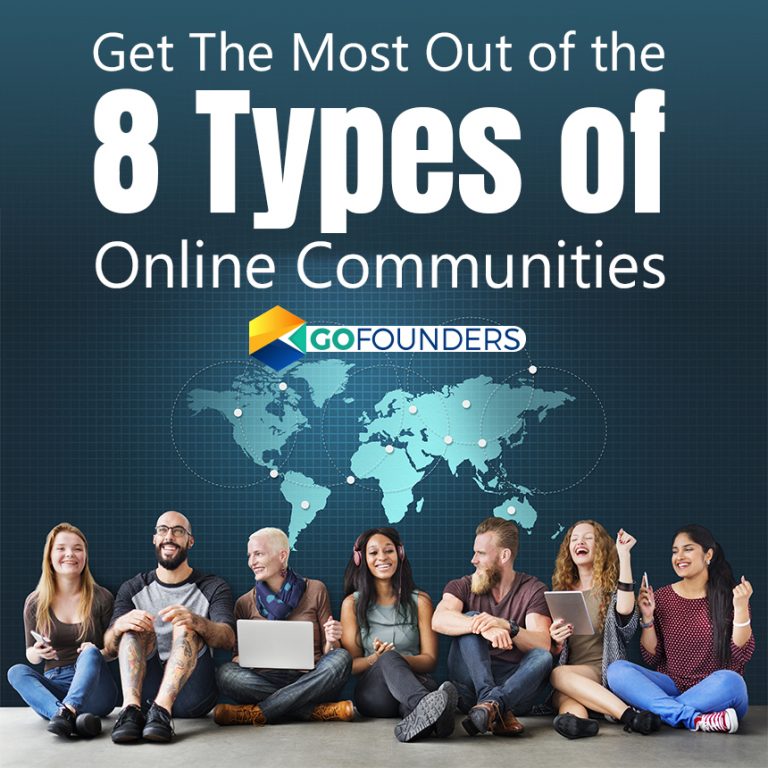
It doesn’t matter if you have a business or not, but if you are online, then you are definitely looking for an online community that suits your interest and needs, but how to find an online community? Don’t worry. We have covered that in this article.
Just in case, you are not aware of various online communities, allow us to explain it to you.
There are 8 different types of online communities:
- Public Social communities: We all are very well aware of this community and are very active in these communities every day. Yes, we are talking about Facebook and Twitter. Many B2B and B2C organisations are part of these communities too to socialise, increase brand awareness and promote and sell products on these platforms.
2. Public Owned or Insight communities: Many companies use public social communities to build a customer base. However, not all are loyal to the brands. Hence, these loyal customers create or join public owned or branded communities on a company’s domain which creates forums, content and file libraries to share data. This type of communities help and organisation to receive relevant data through CRM tools. Discussions on the company website help to achieve SEO goals as well.
3. Private communities: In this type of community, all discussions and content are used by registered members and remain safe behind a login wall. GoFounders has such a private community which shares content with registered members only, and these members are only allowed to build teams and invite other interested members.
4. Support communities: These communities can be found on both private and public networks. This type of communities is also considered as idea providers. Members associated with such communities mostly remain active and keep providing feedback on a company’s product or service. These feedbacks (good or bad) work as input for improvising product features and company policies.
5. Advocate Communities: Both the members and the companies get benefited from this community. Members share positive feedback and testimonials with other customers which help companies to drive brand awareness and the companies in return, reward such members and loyal customers.
6. Action-based or Circumstance based communities: This type of communities exists for some cause and social changes. Members of this community try to highlight issues existing in the society which need to be resolved and sometimes also highlight those who are working towards solving a problem.
7. Professional communities: Such communities mostly deal with job-related businesses. Companies keep posting about job vacancies, and their posts are mostly blogs and articles on work culture or company reviews.
8. Local Communities: If you have recently moved into a new city, then local online communities could help you with local information, such as places to visit, best restaurants, nearby locations for trips, etc.
It is very essential that as a company, you make the most out of a community.
Below are the best practices which you should consider while joining or creating a community:
- Create a Well-Defined Goal: It is necessary that you first define your business goals and understand – why do you need to join a community? How will a community serve your purpose? Is joining a community going to reduce customer support efforts? Create a list of such questions which will help you create a goal for being on the community.
- Have Open-Ended Discussions: Always try to initiate an open-ended conversation which would allow the members to participate and share their views. Let it be a two-way conversation where you keep them engaged in the discussion and try to extract as much information as required for your business activities.
- No “Only” Marketing: Don’t just focus on posting contents and talking about your products and services. You need to keep a check on on-going discussions and offer support in case members seek help.
- No Negativity: It doesn’t mean that you should delete negative feedback from the community page. Instead, it means you shouldn’t delete negative reviews or comments because it will discourage members to further participate in sharing testimonials or feedback for your products.
- Always Listen and Learn: Try to align your marketing and design team with the output of the community discussions. This would help you to channelize input and output, and would also help to earn trust from the members that their opinion does matters to you.
- Reward testimonials: Rewards motivate participants, and this is what you need to do in a community. Those who write good about you and share testimonials with other customers, you need to reward them individually and display reward to rest of the community members so that they keep helping you in your brand awareness program.
So now you know – what is a community? What are the types of online communities? How to find a perfect matching community for your business and brand? And how you can achieve maximum by being part of a well-defined community? Try to go through dos’ and don’ts and implement the same to achieve your business milestones.


